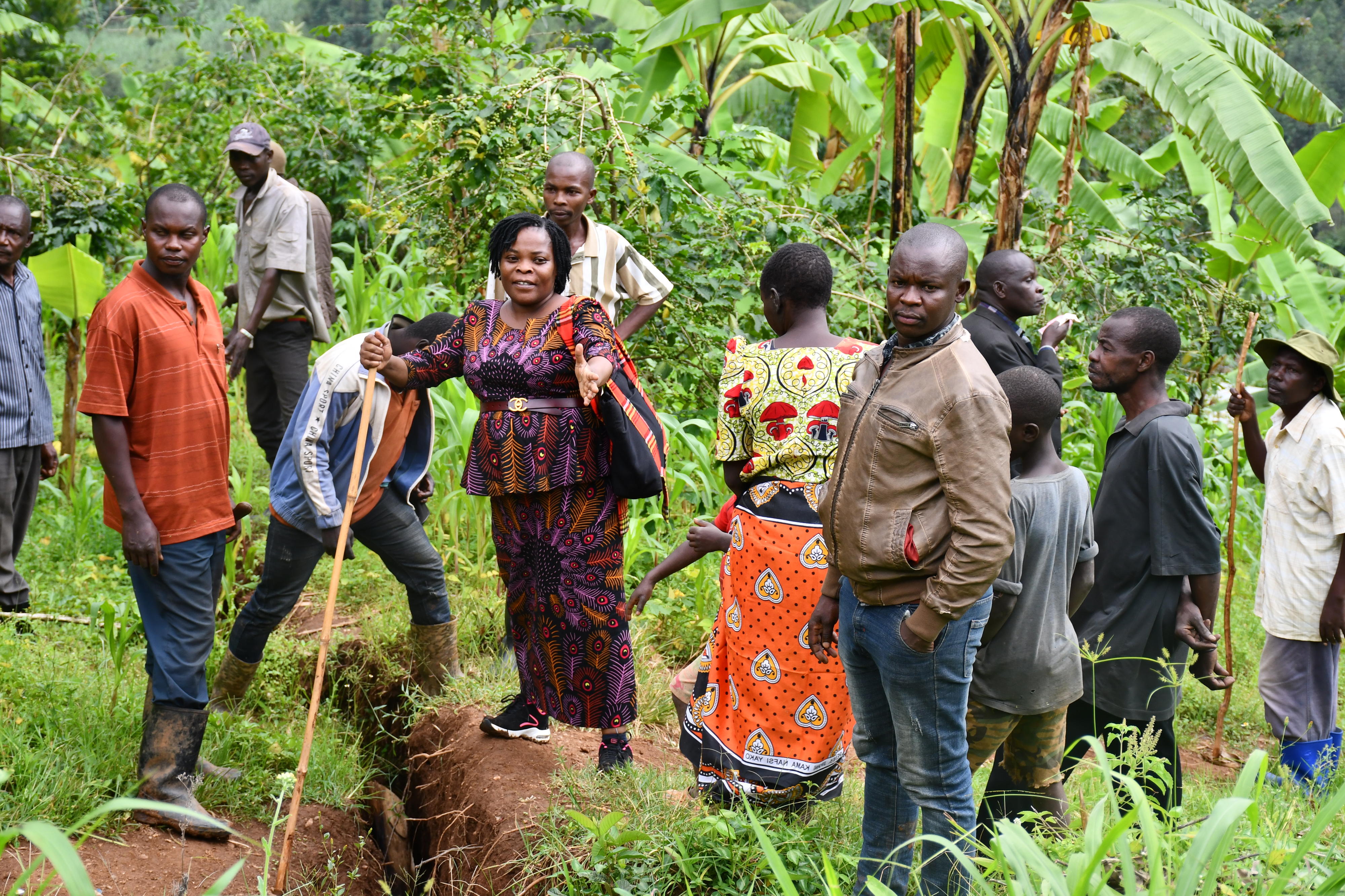Bududa’s cracks still ignored despite risks

Mr Magidu Kutosi and his family had a sleepless night on May 30 after he heard an eerie creaking sound echoing through his house.
“The noise lasted some minutes before I started witnessing the entire house shaking. I knew there was something wrong,” Mr Kutosi, a resident of Namarango Village in Bubiita Sub-county, Bududa District, observes.
“I woke my wife and children up. We stayed awake until morning as the noise continued even becoming more resolute,” he adds.
In the morning, Mr Kutosi found out that beneath the foundation, there was a gaping crack running through the house, something they least expected.
“We didn’t know what the cause was and what to do about it,” he says.
The locals, however, advised Mr Kutosi to relocate his family members to a safer place in case the house sank the next day.
He moved the family to his elder brother’s home in the neighbouring village. After four days, his cracked house sank, burying whatever remained in it.
Mr Kutosi is not the only one affected by the cracks, which have largely remained ignored.
Daily Monitor has learnt from local leaders that officials from the Office of the Prime Minister visited the area and assessed the situation but nothing has been done yet, despite reminders.
About 100 families in the same village have been displaced.
Scientists say cracks could grow worse and trigger multiple landslides, especially as heavy rains continue to pound the area.
Recently when Daily Monitor visited the area , about 50 abandoned homes were spotted, some of which have collapsed.
Mr Muhammed Walukoli, another displaced person with a family of 30, says his house collapsed three days after it developed a wide crack beneath its foundation.
“We need temporary housing because this entire area is no longer safe. The worst might happen soon in this area and the government will rush to bury us,” he says.
The three-kilometre crack running through several villages to River Tsume has spread fears among locals living in the villages of Buwanyanga, Busooto Upper, Busooto Central and Bumombi.
The crack has also destroyed water sources and graveyards.
The affected have sought shelters in the trading centres and schools as they wait for the government response.
At least 1,000 people have been killed by landslides over the past 10 years and out of such deaths, 70 percent were registered in Bududa, which sits on the slope of Mt Elgon.
Mr Patrick Meru, the the councillor representing Bubiita Sub-county, says the government should send experts to examine the cracks.
“This is a serious matter and if it is left unattended to, it will be worse than the 2010 Nametsi landslide that killed hundreds,” Mr Meru says.
He says the three-kilometre crack, which originated from the Bubiita hill, has spread through several villages to River Tsume, causing more fear. In 2018, River Tsume burst its banks and killed 42 people and swept away nearly 150 homes in Bukalasi Sub-county as boulders crushed everything in their path.
Mr Meru says the government should resettle people living in landslide-prone areas in the safer places within their districts.
“Since the relocation started, very few people have been relocated yet the number of those at risk keep rising,” he says.
The government started the resettlement of landslide victims to Bunambutye in Bulambuli District in 2019 after the Office of the Prime Minister bought more than 2,800 acres of land in 2013.
Government settlement plan
About 300 families have so far been resettled in the camp in three phases, starting from May 2019, February 2020 and February 2022.
The chairperson of Bududa, Mr Milton Kamoti, says there would be loss of lives if people living in risky areas with cracks are not relocated.
He expresses disappointment with the government for failing to pay people so that they resettle themselves.
He says relocating them to Bunambutye is a slow process and expensive venture, which should be shelved for now.
Mr Wiberforce Walukano, an environmentalist working with Manafwa Watershed Restoration and Stewardship project (MWARES), says the continued loss of soil due to erosion is responsible for the cracks.
“The only viable solution is for locals to embrace planting of indigenous trees, digging trenches, terracing and embracing better farming practices,” he says.
MWARES project is spearheading a project to restore resilience in Bududa in partnership with Africa 2000 Network Uganda, Kyambogo University, Makerere University and Wageningen University (Netherlands).
The State minister for Karamoja Affairs, Ms Agnes Nandutu, says the government should promote urbanisation in Bududa as part of a long-term plan for resettlement.
“We want to promote urbanisation because my people are tired of carrying dead bodies back to Bududa for burial from wherever they have been relocated and resettled,” Ms Nandutu, who is also the district Woman MP, says.
“If the heavy rains continue, the entire hill of Bubiita will be swept away. So we need to relocate people as quickly as possible,” she says.
Prime Minister Robinah Nabbanja, while in Bumwanye Village in Bulucheke Sub-county last year, maintained that the government was determined to relocate and resettle all people living in disaster-prone areas. Ms Nabbanja had visited the areas following the occurrence of a landslide that left households displaced.
When contacted, the OPM spokesperson, Mr Julius Mucunguzi, said officials will visit the area and assess the situation. “We will assess the situation not far from now,” he said by telephone.
RECENT CASES
June 2019. A landslide occurred in Buwali Sub-county, leaving five people dead and more than 400 displaced in Bududa.
October 2018: Forty-eight people were killed and more than 500 people displaced following a landslide in Suume Village, Bukalasi Sub-county in Bududa.
August 2017: landslides hit Bufupa Parish in Sironko District, killing seven people and displacing hundreds.




